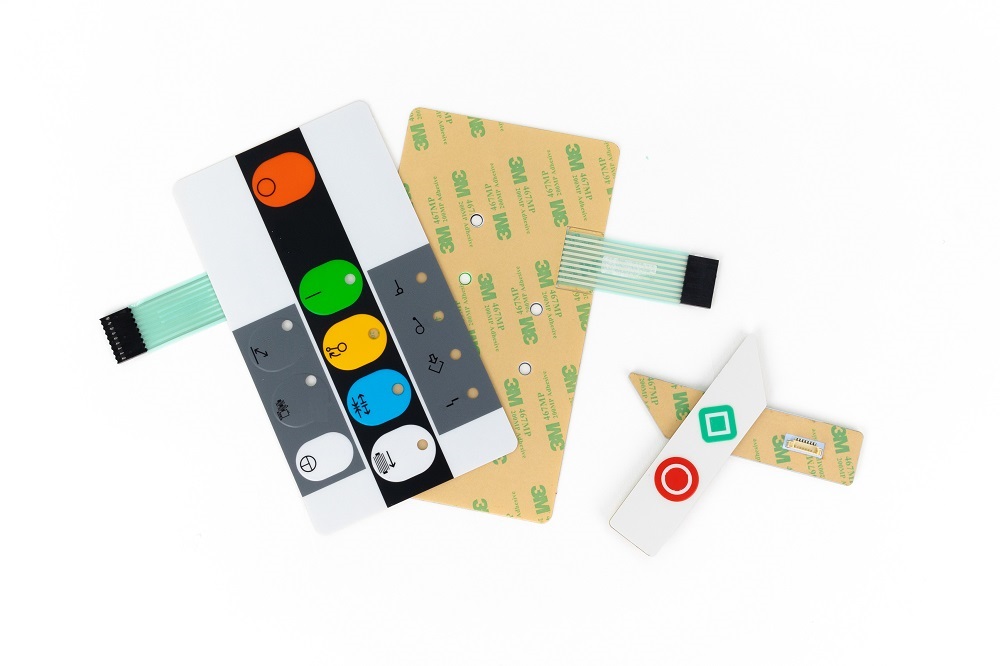Understanding Membrane Layer Switches: The Secret to Long Lasting and Reliable Controls

What Are Membrane Layer Buttons?
Membrane layer switches are a sophisticated service in the realm of individual interface modern technology, incorporating functionality and layout perfectly. These gadgets function as an interface between individuals and digital systems, incorporating a number of elements right into a portable layout. Usually built from versatile, thin layers of materials, membrane switches are developed to react to touch, allowing users to communicate with machinery and electronic devices effectively.
The primary components of a membrane layer button consist of a printed circuit layer, graphic overlay, and a spacer layer that avoids unintended activation. The graphic overlay can be tailored to mirror brand name identity or user preferences, boosting aesthetics while ensuring use. Membrane layer switches are commonly made use of in numerous applications, including medical tools, consumer electronic devices, and industrial equipment, owing to their resilience and resistance to environmental variables such as wetness and dust.
Among the crucial advantages of membrane buttons is their capability to withstand damage, making them optimal for high-traffic environments. In addition, they are lightweight and require marginal area, enabling innovative layouts in product growth. In general, membrane changes represent a functional and efficient selection for contemporary digital interfaces, weding technology with user-centric layout principles.
Just How Membrane Changes Job
The operation of membrane changes joints on a simple yet effective system that converts user input into electronic signals. When a customer presses the button, the top layer deforms, enabling a conductive aspect in the circuit layer to make call with an equivalent conductive pad on the underside of the graphic overlay.
The design of membrane switches can differ, yet they usually incorporate domes or tactile aspects to supply responses to the customer, boosting the total experience - membrane switch. The materials made use of in membrane layer buttons, such as polyester or polycarbonate, contribute to their sturdiness and resistance to environmental aspects, consisting of moisture and dust. Moreover, the published circuits are commonly enveloped, which shields them from damage over time.
Advantages of Membrane Layer Buttons

In addition, more info here membrane switches are known for their sturdiness. Built from durable products, they are immune to dirt, wetness, and physical wear, which dramatically expands their life-span contrasted to conventional mechanical buttons. This resilience makes them especially appropriate for high-traffic atmospheres and applications needing durability.
One more considerable benefit is the ease of cleaning and maintenance. The smooth surface area of membrane layer switches over lessens dust build-up and is typically unsusceptible spills, making them optimal for settings that require frequent sanitization.
Moreover, membrane layer buttons provide a streamlined account, bring about a thinner layout that can be incorporated into various tools without including bulk. This feature not just boosts the visual charm however also adds to an extra ergonomic product design.
Applications of Membrane Layer Buttons
Versatile and user-friendly, membrane switches locate applications across a wide array of markets, including clinical devices, customer electronics, and commercial devices. In the medical area, these switches are indispensable to gadgets such as analysis devices, patient surveillance systems, and infusion pumps, where integrity and ease of cleansing are vital. Their ability to keep and withstand extreme environments capability makes them perfect for such applications.

In consumer electronic devices, membrane layer buttons are used in products like microwaves, cleaning equipments, and push-button controls - membrane switch. Their streamlined design permits instinctive user interfaces, enhancing the general customer experience while providing toughness and resistance to tear and wear
Industrial tools additionally takes advantage of membrane switches, especially in control panels for equipment and automation systems. These buttons offer security against dirt and wetness, ensuring consistent efficiency in tough atmospheres. In addition, their personalized features allow producers to customize them to certain functional demands, enhancing efficiency and functionality.
Selecting the Right Membrane Switch
When selecting a membrane switch, it is important to consider various factors that affect efficiency and viability for particular applications. The primary considerations consist of ecological problems, tactile feedback, durability, and layout requirements.
First, examine the operating atmosphere; switches exposed to moisture, chemicals, or extreme temperatures call for certain materials to ensure long life and performance. Next, evaluate the demand for tactile feedback. Relying on individual interaction, some applications might gain from a tactile feedback to verify activation, while others might like a non-tactile style for visual reasons.
Resilience is another important element; membrane layer switches should be made to stand up to frequent usage, impacts, and abrasion. Make certain the chosen button can withstand the anticipated lifecycle, particularly in high-usage circumstances.

Final Thought
In final thought, membrane layer switches serve as necessary components in the style of sturdy and dependable control systems across different sectors. The versatility of membrane changes permits for customized solutions that satisfy certain functional demands, reinforcing their importance in contemporary innovation.
Membrane layer switches over stand for a crucial element of contemporary user interface style, mixing capability with resilience in various applications.Membrane switches are an innovative option in the world of customer interface modern technology, incorporating capability and layout seamlessly. Generally constructed from flexible, news thin layers of materials, membrane buttons are designed to react to touch, making it possible for users to connect with equipment and digital tools properly.
The layout of membrane layer buttons can vary, but they frequently incorporate domes or tactile components to give responses to the individual, improving the overall experience.In conclusion, membrane switches over offer as necessary elements in the design of reliable and sturdy control systems throughout different industries.
Comments on “Choosing the Right Membrane Switch for Your Business Needs”